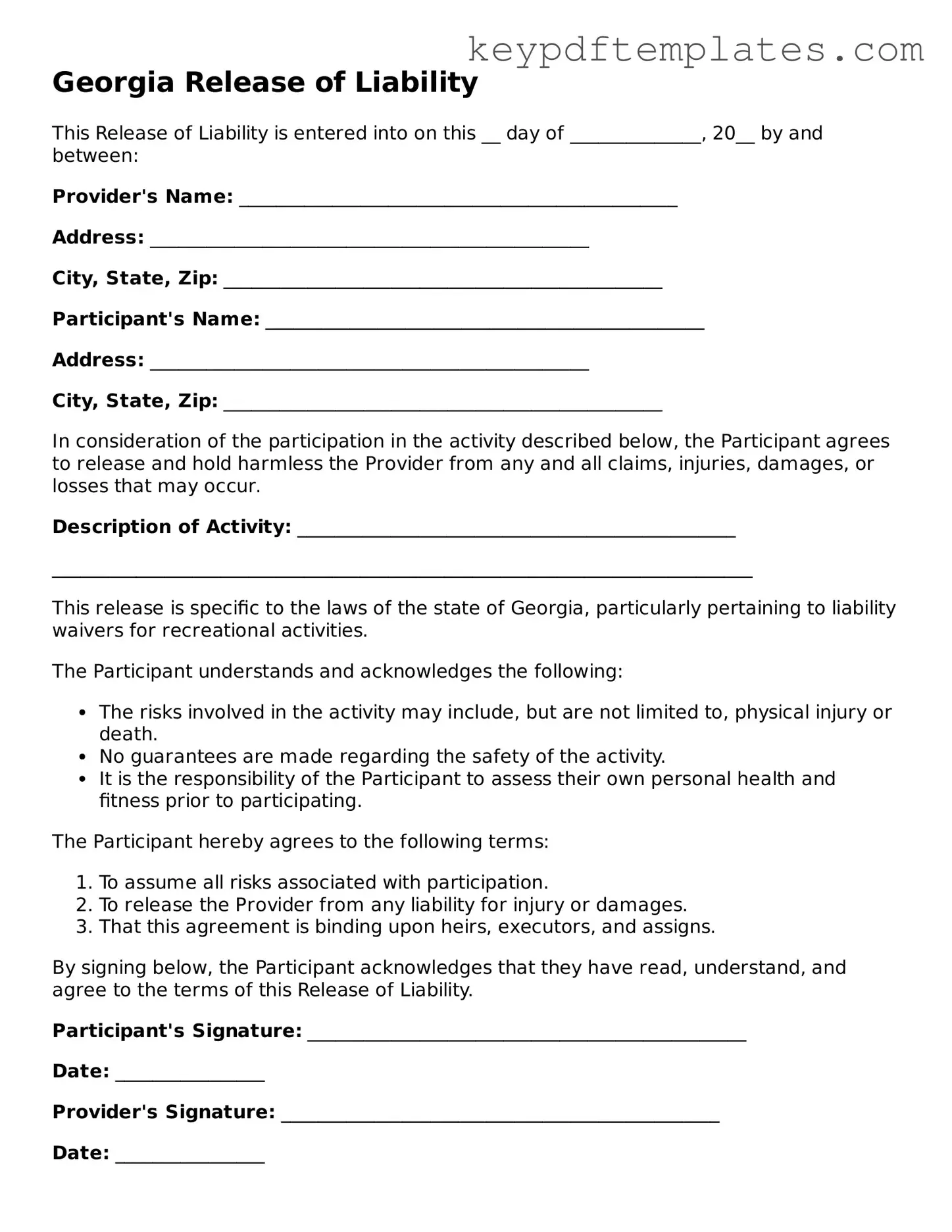Legal Release of Liability Document for the State of Georgia
The Georgia Release of Liability form is a legal document designed to protect individuals and organizations from liability for injuries or damages that may occur during specific activities. By signing this form, participants acknowledge the risks involved and agree not to hold the organization responsible for any accidents. This form is commonly used in recreational activities, events, and sports to ensure that all parties understand their rights and responsibilities.
Modify Document Online
